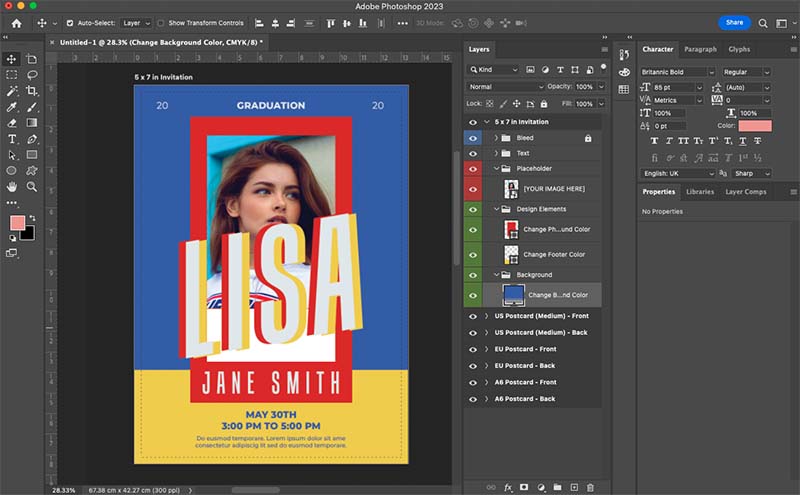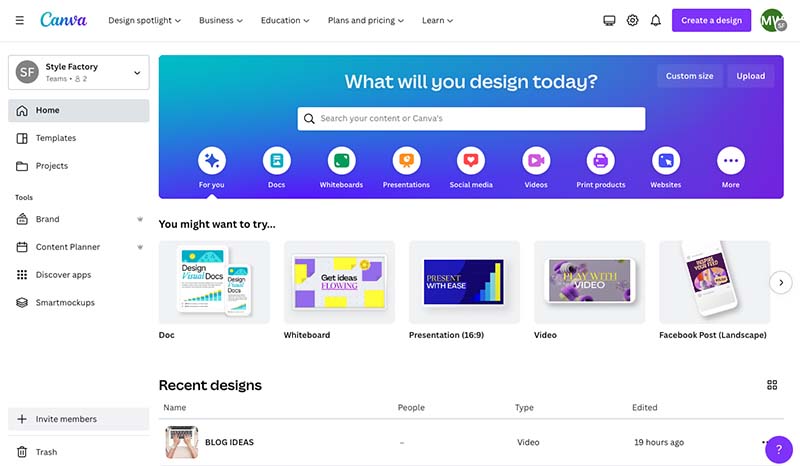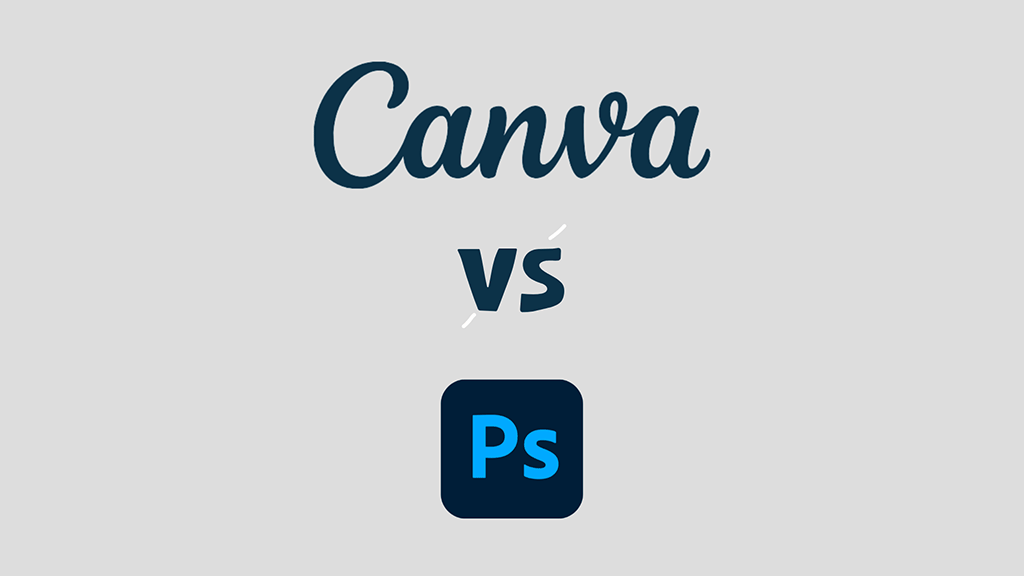Canva vs Photoshop (2024) — Which is Better?
Canva vs Photoshop (2024) — Which is Better?
Canva vs Photoshop — which is better? In this comparison, I take an in-depth look at these two leading visual design tools, and help you pick the one that’s right for your business.
Let’s start our full comparison with a key question: what are Canva and Photoshop?
What are Canva and Photoshop?
Canva and Adobe Photoshop are graphic design tools that let you create visual materials for a wide variety of uses. Both platforms can be used for creating online and printed material; photo editing; making videos; and even web design.

But there is a significant difference in the degree of technical editing that can be done within both tools.
Canva is aimed at users with little to no design training or experience — consequently, it is extremely easy to use and comes with a very gentle learning curve.
The tool provides a wide range of accessible features that help you create visual assets without too much fuss — templates, stock images and ultra-easy-to-use image editing tools.
The downside is that the design tools provided are on the basic side, and the the scope for advanced graphic design work within the tool is fairly limited.
By contrast, Photoshop is a professional design tool that has been specifically designed for complex image editing and ‘serious’ graphic design work. It gives you a wide range of image manipulation features that allow you to tweak and edit every imaginable setting, right down to the individual pixels of your designs.
Unsurprisingly, this means that Adobe Photoshop is the much more technically powerful platform of the two, and its learning curve is significantly steeper than Canva’s — it can take months or even years to truly master the app.
Essentially, Canva is an easy-to-use multi-purpose design tool, while Photoshop — particularly when combined with some of its sibling apps in the Adobe ‘Creative Cloud’ suite — is probably best described as the ultimate image manipulation tool for visual professionals.
That’s not to say that ‘more powerful’ equates to ‘better’ for your needs however — we’ll dig into the contexts in which both products work best shortly.
But first, a quick look at the history of both tools.
Canva and Photoshop: history and userbases
Photoshop was originally developed in Michigan way back in 1987, and it is now arguably the most well-known product of its parent company, Adobe.
Adobe is one of the five biggest software companies in the world, supported by a staff of over 29,000 people.
Photoshop is just one of the 20+ apps available in Adobe’s flagship product suite — Adobe Creative Cloud — which includes other well-known tools such as Illustrator and After Effects. Creative Cloud has over 26 million paying users.
Canva, which was launched in 2013 by Australian technology entrepreneur Melanie Perks recently exceeded 170 million monthly active users in over 190 countries. In excess of 20 billion designs have been created with the tool and more than 4,000 staff members now work for the company.
But how do both these tools work?
How do Canva and Photoshop work?
Canva and Photoshop work in quite different ways.
Canva is primarily designed to be used in a web browser such as Safari, Google Chrome or Microsoft Edge. This means that all the processing of your designs takes place ‘in the cloud’ and you don’t need a particularly powerful (or expensive!) computer to use the tool.
(A downloadable Canva desktop app is available for Mac and PC, but this still requires an Internet connection for you to avail of the vast majority of the platform’s assets — templates, stock media etc.).

By contrast, Photoshop is a desktop application that you download and install on your own computer. All processing is done locally, and you don’t need to be connected to the Internet to make the most of the application.
(A basic version of Photoshop for browsers — appropriately named ‘Photoshop for Web’ — is now generally available, but this is missing many of the more powerful image manipulation features of the desktop version.)
It’s important to note that for Photoshop to function properly, you’ll need a decent Mac, PC or iPad with a reasonable amount of RAM — ideally 16GB+ — and the performance that you’ll get out of Photoshop will depend heavily on the quality of your computer’s graphics card.
By contrast, you can use Canva on a fairly basic device — even a fairly ordinary Chrome book will do the job.
Despite the different approaches to how they work, Canva and Adobe are both ‘software as a service’ (SaaS) tools. You cannot buy either tool outright or actually own a copy yourself — instead, you pay a monthly or annual fee for access to the software.
And speaking of fees…
Canva pricing vs Photoshop pricing
Canva pricing
There are three Canva pricing plans available:
- Canva Free — $0 per month
- Canva Pro — $14.99 per month (for one user)
- Canva for Teams — variable pricing, starting at $29.99 per month for up to 5 users.
If you pay annually for a ‘Canva Pro’ or ‘Canva for Teams’ plan, you receive a 16% discount on the above fees.

As for the key differences in features between Canva’s plans, some of the main ones to watch out for are:
- Seats — Canva only lets you add more than one user on its ‘Canva for Teams’ plan.
- Templates and free media assets — Canva’s two paid plans come with significantly more templates and royalty-free images, videos and audio than the free one.
- AI-powered design tools — these are only fully accessible on paid Canva plans.
- Brand controls — you can only access these on paid plans, and ‘Canva for Teams’ gives you more of them.
- Storage — the free plan provides you with 5GB of cloud storage; the ‘Pro’ plan gives you 1TB; and on the ‘Canva for Teams’ plan, you get 1TB per user.
(You can read our Canva pricing and Canva Pro vs Free articles for more details on the key differences between Canva plans).
As mentioned above, there is a free version of Canva available, which gives you cut-down access to the tool — there are less templates and stock images available in this, and the output formats it gives you are limited. But even so, the free version is extremely usable — you can definitely create very usable content and designs with it.



Comments
Post a Comment